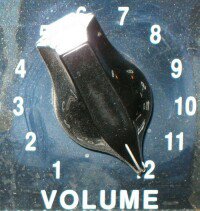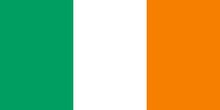
As you probably know, Dublin is (to paraphrase Patti Smith when she visits us here in Chicago) the city of my birth. I came to America in august of 1959, at the advanced age of 19 months. At 17 I became a citizen of the U.S., swearing to “renounce all foreign princes and potentates” and to fight for my country just in time to blow years of hard work as a future conscientious objector (Vietnam had only just fallen).
Sadly, I was 21 before I had my first Guiness.
From now until the 17th GT12 will be exploring our particular Irish experience. By the end I am sure that you will all truly wish that you could be Irish.
Our efforts are especially dedicated to our favorite fellow Irish folks: G. Sullivan, S Mullaney, M Frazel, M. Morphy (nee' McLaughlin) and, most of all, D. Callahan.
Let’s start today with the basics, courtesy Wikipedia:
Politically, the island of Ireland is divided into:
Ireland (described as The Republic of Ireland), a sovereign state, with its capital in Dublin, covering five sixths of the island. The state of Ireland is named Éire in the Irish language. Northern Ireland, part of the United Kingdom, constituted from six of the nine traditional counties of the northern province of Ulster.
Typically, the two political entities on the island are referred to as the South and the North. Northern Ireland is often called The Six Counties (referring to the six traditional counties of Ireland that it occupies); and, because these six counties were all part of the broader Irish province of Ulster, Northern Ireland is also sometimes referred to as Ulster. The Republic of Ireland is often contracted to the Republic, and is sometimes referred to as Southern Ireland or the Free State.
Prior to the Government of Ireland Act 1920 and Partition Ireland had been a unified political entity within the United Kingdom of Great Britain and Ireland which came into being in 1801 as a result of the Act of Union. In 1541, the Kingdom of Ireland was established by England's Henry VIII, though this realm did not cover the whole island until the early 17th century. Prior to then, Ireland had been politically divided into a number of different Irish kingdoms (Leinster, Munster, Connacht, Mide, Ulster, and others). Before the advent of the Normans the different kingdoms were augmented by a High Kingship. The extent of power or influence of the High Kings throughout the entire country varied from reign to reign.
Further information: Irish States (1171-present)
In a number of respects the island operates officially as a single entity, for example, in Gaelic games, rugby, and certain other sports. The major religious bodies, the Roman Catholic Church, the Methodist Church in Ireland, the Church of Ireland and the Presbyterian Church in Ireland, are organized on an all-Ireland basis. 88% of the population of the Republic of Ireland (2002 census) and about 44% of Northern Ireland are Catholic. Some trade unions are also organised on an all Irish basis and associated with the Irish Congress of Trades Unions(ICTU) in Dublin, while others in Northern Ireland are affiliated with the Trades Union Congress (TUC) in the United Kingdom, and some affiliate to both — though such unions may organise in both parts of the island as well as in Britain. The island also has a shared culture in many other ways. Traditional Irish music, for example, though showing some variance in all geographical areas, is, broadly speaking, the same on both sides of the border. Irish and Scottish traditional music have many similarities.
And, since we are all about politics, we’ll leave off with this Irish saying, which seems particularly relevant to the U.S. today:Is fheàrr teicheadh math na droch fhuireach. -- Better a good retreat than a bad stand






No comments:
Post a Comment